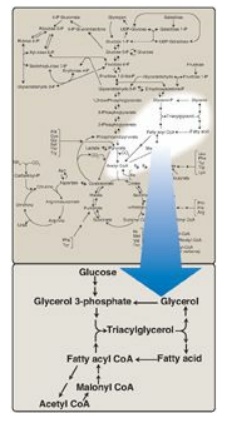Fatty Acid, Ketone Body, and Triacylglycerol Metabolism
| Home | | Biochemistry |Chapter: Biochemistry : Fatty Acid, Ketone Body, and Triacylglycerol Metabolism
Fatty acids exist “free” in the body (that is, they are unesterified) and as fatty acyl esters in more complex molecules such as triacylglycerols (TAGs).
Fatty Acid, Ketone Body, and Triacylglycerol
Metabolism
OVERVIEW
Fatty acids exist
“free” in the body (that is, they are unesterified) and as fatty acyl esters in
more complex molecules such as triacylglycerols (TAGs). Low levels of free
fatty acids (FFAs) occur in all tissues, but substantial amounts can sometimes
be found in the plasma, particularly during fasting. Plasma FFAs (transported
on serum albumin) are in route from their point of origin (TAG of adipose
tissue or circulating lipoproteins) to their site of consumption (most
tissues). FFAs can be oxidized by many tissues, particularly liver and muscle,
to provide energy and, in liver, to provide the substrate for ketone body
synthesis. Fatty acids are also structural components of membrane lipids, such
as phospholipids and glycolipids. Fatty acids attached to certain proteins
enhance the ability of those proteins to associate with membranes. Fatty acids
are also precursors of the hormone-like prostaglandins. Esterified fatty acids,
in the form of TAGs stored in white adipose tissue (WAT), serve as the major
energy reserve of the body. Alterations in fatty acid metabolism are associated
with obesity and diabetes. Figure 16.1 illustrates the metabolic pathways of
fatty acid synthesis and degradation and their relationship to carbohydrate
metabolism.

Figure 16.1 Triacylglycerol
synthesis and degradation. CoA = coenzyme A.
Related Topics
